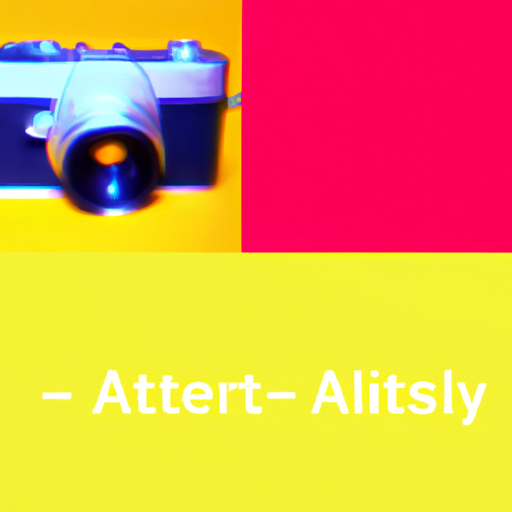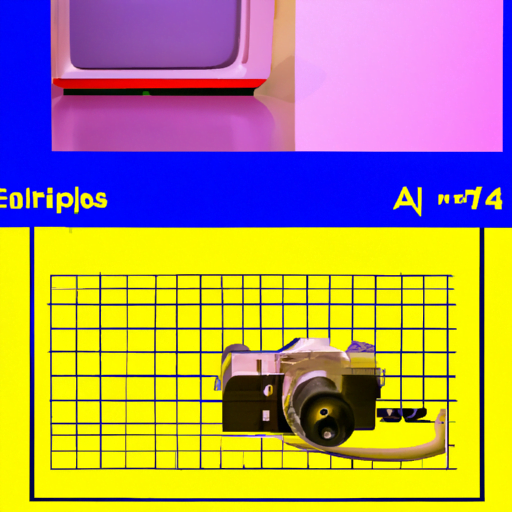
-
Table of Contents
Aesthetic vs. Functional Design in Interfaces

When it comes to designing interfaces, there is an ongoing debate between aesthetic design and functional design. Aesthetic design focuses on creating visually appealing interfaces that are pleasing to the eye, while functional design prioritizes usability and efficiency. Both approaches have their merits, but finding the right balance between aesthetics and functionality is crucial for creating successful interfaces. In this article, we will explore the advantages and disadvantages of each approach and discuss how designers can strike a balance between the two.
The Importance of Aesthetic Design
Aesthetic design plays a significant role in attracting users and creating a positive first impression. Research has shown that users form an opinion about a website or application within the first few seconds of interacting with it. A visually appealing interface can capture users’ attention and make them more likely to explore further.
One of the key benefits of aesthetic design is its ability to evoke positive emotions. When users find an interface visually pleasing, they are more likely to associate positive emotions with the product or brand. This emotional connection can lead to increased user engagement and loyalty.
Furthermore, aesthetic design can enhance the overall user experience. Well-designed interfaces with visually appealing elements can make users feel more comfortable and confident while using the product. This can result in increased user satisfaction and a higher likelihood of repeat usage.
The Power of Functional Design
While aesthetic design is important, functional design should not be overlooked. Functional design focuses on creating interfaces that are intuitive, efficient, and easy to use. It prioritizes usability and aims to minimize user frustration.
One of the key advantages of functional design is its ability to improve task completion rates. When users can easily navigate through an interface and accomplish their goals without obstacles, they are more likely to have a positive experience and achieve their desired outcomes. This can lead to increased user productivity and satisfaction.
Functional design also plays a crucial role in accessibility. Interfaces that are designed with usability in mind are more inclusive and can be used by a wider range of individuals, including those with disabilities. By considering accessibility from the early stages of the design process, designers can ensure that their interfaces are usable by everyone.
Moreover, functional design can have a direct impact on business goals. A well-designed interface that prioritizes functionality can lead to increased conversions, sales, and customer retention. By streamlining the user journey and removing unnecessary steps, functional design can help businesses achieve their objectives more effectively.
Striking the Right Balance
While aesthetic and functional design may seem like opposing forces, they can coexist harmoniously in interface design. Striking the right balance between the two is crucial for creating interfaces that are both visually appealing and highly functional.
User-Centered Design
One approach to achieving this balance is through user-centered design. User-centered design involves understanding the needs, goals, and preferences of the target audience and designing interfaces that cater to their specific requirements.
By conducting user research, designers can gain valuable insights into users’ expectations and preferences. This information can then be used to inform the design decisions, ensuring that the interface meets both aesthetic and functional requirements.
Usability Testing
Another effective way to strike the right balance is through usability testing. Usability testing involves observing users as they interact with a prototype or a live interface and collecting feedback on its usability and functionality.
By involving users in the design process, designers can identify areas where the interface may be lacking in terms of aesthetics or functionality. This feedback can then be used to iterate and improve the design, ensuring that it meets both user expectations and business goals.
Collaboration between Designers and Developers
Collaboration between designers and developers is also crucial for achieving a balance between aesthetics and functionality. Designers and developers should work closely together to ensure that the design vision is effectively translated into a functional interface.
By involving developers early in the design process, designers can gain insights into technical limitations and possibilities. This collaboration can help designers make informed design decisions that take into account both aesthetic and functional considerations.
Case Studies
Let’s take a look at two case studies that highlight the importance of finding the right balance between aesthetic and functional design in interfaces.
Case Study 1: Apple
Apple is known for its sleek and visually appealing interfaces. The company places a strong emphasis on aesthetics, with clean lines, minimalist designs, and attention to detail. However, Apple also prioritizes functionality, ensuring that its interfaces are intuitive and easy to use.
For example, the iPhone’s user interface is visually appealing with its smooth animations and elegant typography. At the same time, it is highly functional, allowing users to easily navigate through apps, access settings, and perform tasks efficiently.
Apple’s success can be attributed to its ability to strike a balance between aesthetics and functionality. The company understands that a visually appealing interface alone is not enough; it must also be highly functional to provide a seamless user experience.
Case Study 2: Google
Google, on the other hand, is known for its functional design approach. The company prioritizes usability and efficiency, focusing on creating interfaces that are simple and easy to use.
Google’s search engine interface is a prime example of functional design. The interface is clean and minimalistic, with a focus on the search bar and search results. The simplicity of the design allows users to quickly find the information they are looking for without distractions.
While Google’s interfaces may not be as visually appealing as some other companies, they excel in terms of functionality. Google understands that users visit their platforms to accomplish specific tasks, and the design is optimized to facilitate those tasks efficiently.
Conclusion
In conclusion, both aesthetic and functional design are important considerations in interface design. Aesthetic design can attract users, evoke positive emotions, and enhance the overall user experience. Functional design, on the other hand, focuses on usability, efficiency, and accessibility.
To create successful interfaces, designers must strike a balance between aesthetics and functionality. This can be achieved through user-centered design, usability testing, and collaboration between designers and developers. By finding the right balance, designers can create interfaces that are visually appealing, highly functional, and capable of delivering a seamless user experience.
